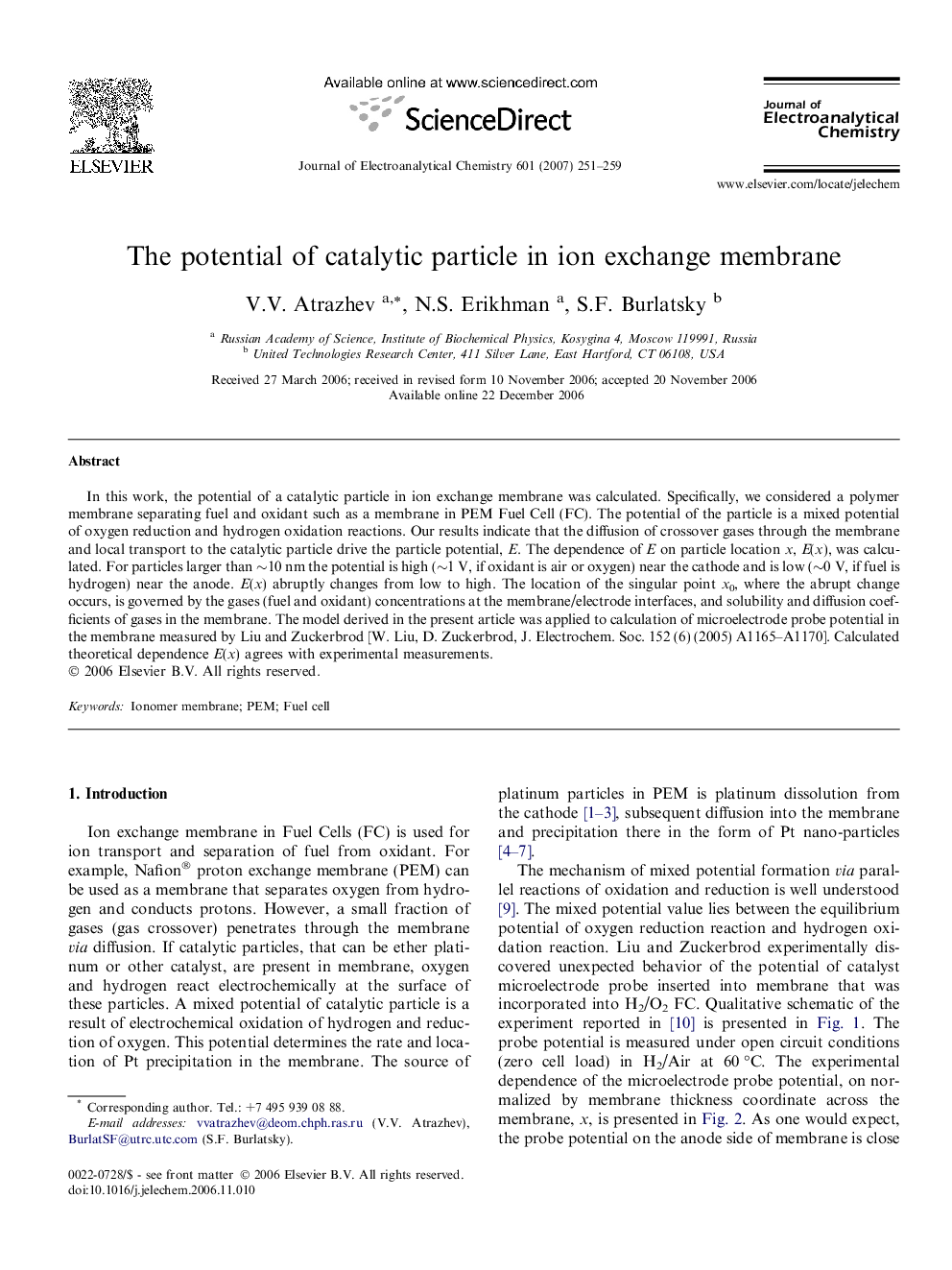| Article ID | Journal | Published Year | Pages | File Type |
|---|---|---|---|---|
| 221256 | Journal of Electroanalytical Chemistry | 2007 | 9 Pages |
In this work, the potential of a catalytic particle in ion exchange membrane was calculated. Specifically, we considered a polymer membrane separating fuel and oxidant such as a membrane in PEM Fuel Cell (FC). The potential of the particle is a mixed potential of oxygen reduction and hydrogen oxidation reactions. Our results indicate that the diffusion of crossover gases through the membrane and local transport to the catalytic particle drive the particle potential, E. The dependence of E on particle location x, E(x), was calculated. For particles larger than ∼10 nm the potential is high (∼1 V, if oxidant is air or oxygen) near the cathode and is low (∼0 V, if fuel is hydrogen) near the anode. E(x) abruptly changes from low to high. The location of the singular point x0, where the abrupt change occurs, is governed by the gases (fuel and oxidant) concentrations at the membrane/electrode interfaces, and solubility and diffusion coefficients of gases in the membrane. The model derived in the present article was applied to calculation of microelectrode probe potential in the membrane measured by Liu and Zuckerbrod [W. Liu, D. Zuckerbrod, J. Electrochem. Soc. 152 (6) (2005) A1165–A1170]. Calculated theoretical dependence E(x) agrees with experimental measurements.
